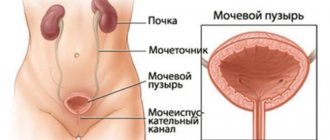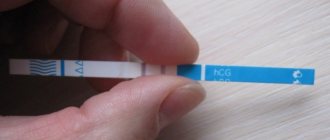What is a birth control ring?
Manufacturer, release form
NuvaRing was developed by the Dutch pharmaceutical company Organon. Sold in sealed foil bags, packed in 1 or 3 pieces in a cardboard box, supplied with detailed instructions with visual illustrations.
Purpose
NuvaRing provides a high degree of protection against unplanned pregnancy: within a year, with proper use of the ring, from 4 to 7 women out of 1000 become pregnant.
Contrary to a fairly common misconception, the functionality of this contraceptive has nothing to do with the purpose of an obstetric pessary, commonly called a uterine ring during pregnancy.
Reviews characterize NuvaRing as a fairly easy-to-use contraceptive, which, however, is not without many of the disadvantages inherent in hormonal contraceptives.
Compound
The active pharmaceutical substance consists of 2 substances:
- progestogen etonogestrel;
- artificial estrogen ethinyl estradiol.
Excipients: ethylene vinyl acetate (EVA) with 28% vinyl acetate content, EVA with 9% vinyl acetate content, magnesium stearate.
Description
The contraceptive is a flexible ring made of low-allergenic material. The diameter of the ring is 54 mm, the cross-sectional diameter is 4 mm. The ring appears transparent and has little or no color. The texture is smooth.
Photo of the NuvaRing pregnancy ring.
Operating principle
After installation in the vagina, under the influence of body temperature, the ring begins to release microdoses of hormones (120 mcg etonogestrel, 15 mcg ethinyl estradiol daily). The contraceptive effect is achieved through:
- suppression of ovulation. In this case, the functions of the ovaries are not completely suppressed;
- thickening of mucus in the endocervix;
- decreased peristalsis of the fallopian tubes;
- changes in the structure of the endometrium.
NuvaRing is designed for continuous 21-day wear. After this period, the used ring is disposed of and, after a week of break, a new one is installed.
https://youtu.be/zRVDJrIE9ow
pharmachologic effect
Hormonal contraceptive drug.
Etonogestrel is a progestogen that binds to progesterone receptors in target organs.
Ethinyl estradiol is an estrogen . The effect of the drug is ensured by a combination of various mechanisms, the most significant of which is the suppression of ovulation.
The use of the drug regulates the menstrual cycle , reducing pain during menstrual bleeding and its intensity. This reduces the likelihood of developing iron deficiency anemia .
The use of the drug reduces the risk of ovarian and endometrial cancer, the development of ovarian cysts , ectopic pregnancy , inflammation of the female reproductive system and benign pathologies of the mammary glands.
Contraindications to using a pregnancy ring
- Age less than 18 years.
- Individual intolerance.
- Severe or multiple risk factors for the development of arterial or venous thrombosis, previous or existing thromboembolism, thrombosis or conditions preceding it.
- Previous or current migraine with focal neurological deficit.
- Diabetes mellitus accompanied by vascular damage.
- Previous or existing pancreatitis with hyperlipoproteinemia type IV.
- Tumors, severe liver diseases.
- Confirmed or probable hormone-dependent tumor.
- Bleeding from the vagina of unknown nature.
- Pregnancy, lactation.
Contraindications for use
- Oncology. Any types of benign, malignant and tumors of unknown etiology;
- Thrombosis of various origins;
- Diabetes;
- Liver diseases (hepatitis, tumors);
- Disorders of the coagulation circulatory system;
- Heart diseases (strokes, history of heart attacks, heart defects);
- Juvenile period;
- Epilepsy;
- Pregnancy;
- Lactation;
- Bleeding of various origins;
- Exacerbations of diseases of the digestive system: pancreatitis, ulcers;
- With caution for women over 35 years of age and smoking;
- Overweight with concomitant diseases;
- For chronic constipation;
- With prolapse and prolapse of the cervix. In this case, other methods of contraception are used. They also use pessaries (uterine rings) that support the pelvic organs. They last a long time and should not be confused with vaginal hormonal rings.
How to properly start using an anti-pregnancy ring
Switching from non-hormonal contraceptives
The ring is inserted on 1 of the first 5 days of the cycle. After installation on the 1st day of menstruation, additional protection is not required; in other cases, during the week, intercourse should be carried out in a condom.
Switching from monocomponent hormonal contraceptives
NuvaRing can be installed after removal (implant, IUD) or termination of the progestin contraceptive (pills, injections). Within 7 days after the initial installation, the product should be additionally protected using condoms.
Switching from combined hormonal contraceptives
Standard recommendation: insertion of the ring on the last day of the usual interval between cycles formed during the use of combined hormonal contraception. It is strictly forbidden to extend the hormone-free period dictated by the previous method of contraception used.
If you are completely confident that you are not pregnant, you can switch to NuvaRing at any time during your cycle.
After an abortion in the 1st trimester
In the absence of a medical prohibition, the patient can use the ring immediately after termination of pregnancy.
After the birth of a child or late pregnancy termination
Installation of the ring is possible 4 weeks after the birth of the child or late abortion. If during this period of time a woman has already resumed sexual activity, then she should first make sure that there is no pregnancy. After installing NuvaRing at a later date, you will need to additionally use condoms for a week.
What is the NuvaRing hormonal ring and how does it work?
The NuvaRing vaginal ring is a modern method of contraception that is very reliable and relatively easy to use.
The NuvaRing hormonal ring is gaining more and more popularity and is receiving good reviews from gynecologists. The contraceptive ring is inserted into the vagina and remains there for 3 weeks. Once in the vagina, the NuvaRing releases small doses of hormones that suppress the ovaries, prevent ovulation and make pregnancy impossible.
According to the manufacturer, the effectiveness of the NuvaRing vaginal ring in preventing pregnancy is about 99%, however, according to independent studies, it is within 92%. The NuvaRing contraceptive ring is more reliable than birth control pills and is approximately as effective as the Evra hormonal patch.
Composition and release form
The NuvaRing hormonal ring is available in the form of flexible transparent rings in packages of 1 and 3 pieces.
Each NuvaRing ring contains the hormones etonogestrel (11.7 mg) and ethinyl estradiol (2.7 mg).
Advantages of the NuvaRing vaginal ring
What are the advantages of NuvaRing? The contraceptive ring has the following advantages:
- Unlike birth control pills, which need to be taken every day, the NuvaRing hormonal ring needs to be inserted into the vagina only once a month (to be more precise, once every 4 weeks).
- With the constant use of NuvaRing, periods become less painful and less abundant.
- Some studies suggest that the use of NuvaRing reduces the risk of uterine and ovarian cancer.
- The NuvaRing ring adapts to the individual characteristics of the female body, so it is not felt in any way by either the woman herself or her sexual partner.
- Unlike a hormonal contraceptive injection, the NuvaRing ring does not lead to symptoms of menopause or osteoporosis.
Disadvantages of the NuvaRing contraceptive ring
The main disadvantages of the NuvaRing ring are its price (higher compared to birth control pills) and the risk of the ring falling out if it is inserted incorrectly. The skill of inserting a ring correctly comes with experience.
In addition, the NuvaRing ring does not protect against sexually transmitted diseases (gonorrhea, chlamydia, HIV infection, etc.), therefore it is recommended only for women who have a permanent partner in whom she is confident.
Important information
Do not forget that the NuvaRing ring is a hormonal method of contraception, which means its use is associated with some risks. Do not start using NuvaRing on your own or based on recommendations from friends. Before using the drug, consult your gynecologist and make sure that you have no contraindications to this method of contraception.
Contraindications to the use of the NuvaRing ring
Avoid using the NuvaRing hormonal contraceptive ring if:
- You are or may be pregnant.
- You are breastfeeding.
- You are over 35 years old and smoke.
- You have had vein thrombosis or are prone to forming blood clots.
- You have high blood pressure.
- You often have headaches.
- You have diabetes.
- You have had breast cancer or other malignant diseases.
- You often have bleeding from the vagina, and the cause is unclear to you.
In some situations, the use of NuvaRing is permissible after consultation with your doctor:
- For varicose veins.
- With elevated blood cholesterol levels.
- With a body weight of more than 90 kg.
- For epilepsy.
- For gallbladder diseases (cholecystitis, gallstones).
- For problems with the thyroid gland.
This is not a complete list. If you are unsure whether NuvaRing is appropriate for your disease or condition, consult your doctor.
Rules for using the NuvaRing ring
The NuvaRing hormonal ring should be inserted into the vagina for 3 weeks and removed on the same day of the week. The new ring must be inserted exactly after 7 days. During the week's break, you may begin to menstruate.
For example, if you inserted a ring on Monday at 8 pm, then you need to remove it exactly 3 weeks later on Monday at 8 pm and insert a new ring the following Monday at approximately 8 pm.
Wash your hands thoroughly before inserting the ring. Take a comfortable position: standing with one foot on the toilet, squatting or lying down. Remove the ring from the package, squeeze it between your index finger and thumb and insert it deep into the vagina. The ring will automatically take the desired position around the cervix. If the ring is inserted correctly, you will not feel it.
To remove the NuvaRing, wash your hands thoroughly, take a comfortable position, and pick up the ring with one or two fingers. The used ring can be thrown into the trash (but not into the toilet).
Is the contraceptive effect maintained during the break?
During a week-long break, the contraceptive effect of the NuvaRing ring remains, and you do not need to use other methods of contraception. This is only true if you insert a new ring after the break ends.
If you did not use hormonal contraceptives in the previous cycle
Insert the NuvaRing birth control ring on the first day of your period. In this case, the contraceptive effect will occur immediately. If for some reason you inserted the ring on days 2-5 of your period, then you should use condoms for the next 7 days.
How to switch to NuvaRing from birth control pills?
If the package of your birth control pills contained 21 tablets, then insert the NuvaRing ring on the 7th day of the week break (that is, on the day when you started taking the next package of pills).
If your OC contained 28 tablets per package, administer the NuvaRing ring the day after taking the last 28 tablets.
If you follow these recommendations, the contraceptive effect is immediate and you do not need to use additional contraception.
How to use NuvaRing after childbirth?
The NuvaRing hormonal ring should be inserted into the vagina no earlier than a month after childbirth. If the ring is inserted in the first 4 weeks after birth, there is a very high risk of it falling out.
If you have already had unprotected sex before inserting the ring, you should first make sure that you are not pregnant, or wait until your first menstruation begins.
If you are not menstruating yet, you can start using the ring any day (after making sure that you are not pregnant). After inserting the ring, use additional contraception (condoms) for another 7 days.
Can NuvaRing be used while breastfeeding?
Breastfeeding women are not recommended to use the NuvaRing hormonal ring.
How to use the NuvaRing ring after an abortion?
If the pregnancy was terminated at less than 12 weeks, the NuvaRing ring can be inserted on the day of the abortion. In this case, the contraceptive effect occurs immediately, and you do not need to use additional contraception. If you did not have time to insert the ring on the day of the abortion, then wait until your next menstruation and insert the ring on the first day of your period. Use condoms before your period starts.
If the pregnancy termination occurred more than 12 weeks, then use the instructions in the section “How to use NuvaRing after childbirth.”
What should I do if I forgot to remove the NuvaRing after 3 weeks?
If you forgot to remove the NuvaRing ring in time, then try to remember how long ago you installed it:
- If the ring was inserted 4 weeks ago or less, remove the ring as soon as possible and take a 7-day break. Insert a new ring on the 7th day after removing the previous one. You do not need to use additional methods of contraception, since in this case the contraceptive effect of the NuvaRing ring is preserved.
- If the ring was inserted more than 4 weeks ago, the contraceptive effect may be reduced. In this case, you need to remember whether you had unprotected sex. If you have had unprotected sex, stop using rings until you are sure you are not pregnant (take a pregnancy test or a hCG blood test). If you have not had unprotected sexual intercourse and you are sure that you are not pregnant, then insert a new ring immediately after removing the previous one and use additional methods of contraception for another 7 days.
What should I do if I forgot to put in a new NuvaRing after a week's break?
Try to remember if you had unprotected sex after the previous ring was removed. If so, do not insert a new ring until pregnancy has been ruled out.
If you have not had unprotected sex since removing the previous ring, then insert a new ring as quickly as possible and use additional methods of contraception (condoms) for another 7 days.
What to do if the NuvaRing falls out?
If the NuvaRing is not installed correctly, it may fall out of the vagina. In this case, the contraceptive effect may be reduced and there is a risk of pregnancy.
If the ring fell out less than 3 hours ago, rinse it with cool water and insert it back into the vagina. In this case, the contraceptive effect is not impaired and the risk of pregnancy does not increase.
If the ring fell out more than 3 hours ago, the contraceptive effect is reduced.
- If this is the first or second week after inserting the ring, then after rinsing the ring with cool water, insert it back into the vagina and use additional methods of contraception (condoms) for another 7 days.
- If this is the third week after inserting the ring, then throw it away and insert a new ring immediately. In this case, you may not bleed, or you may experience spotting. This is fine. If for some reason you did not insert a new ring immediately, then wait for the start of bleeding (menstruation) and insert a new ring in the first 7 days after removing the previous one.
How to postpone unwanted menstruation using the NuvaRing ring?
When using the NuvaRing contraceptive ring, you have the opportunity to postpone your next period if for some reason you do not want it (vacation, etc.)
To do this, install a new NuvaRing on the same day as the previous one was removed, without taking a 7-day break. Remove this ring after 3 weeks and then take a 7-day break, returning to your normal ring usage.
In this case, you may experience spotting and spotting. This is fine.
Bloody (brown) discharge when using the NuvaRing ring
While using the contraceptive NuvaRing, spotting and spotting may occur in the middle of the cycle. This is a normal phenomenon that does not require discontinuation of the drug. Contact your doctor if you experience spotting almost every day or every day for an entire month.
The appearance of spotting in the middle of the cycle may also indicate that the ring has fallen out and the contraceptive effect is reduced. In this regard, when spotting appears, you need to make sure that the ring is in place. To do this, wash your hands thoroughly and, taking a comfortable position, insert one finger into the vagina, trying to feel the ring.
Can I use tampons and the NuvaRing at the same time?
Yes, there are no contraindications for this. In this case, of course, you should follow the recommendations of gynecologists on the use of tampons.
In rare cases, the ring may fall out when you remove the tampon, so you should regularly check that the ring is in place when using tampons.
In what cases can the contraceptive effect of the NuvaRing ring be reduced?
Taking certain medications may reduce the contraceptive effect of NuvaRing. For example, when taking antibiotics, a woman is recommended to use additional contraception (condoms) throughout the entire course of treatment and for another 7 days after finishing antibiotic treatment.
Before taking any medicine, check with your doctor to see if it may reduce the contraceptive effect of the NuvaRing.
What to do if your period does not come within a week's break?
In some women, due to constant use of the NuvaRing ring, menstruation may stop altogether.
If your period does not come during a week-long break, then try to remember whether the ring fell out for more than 3 hours last month. If you have a loss, the contraceptive effect of the ring may have been reduced, which means you need to take a pregnancy test.
If you used the ring according to the instructions, then the likelihood of pregnancy is quite low. In this case, you can insert a new ring on the 7th day after removing the previous one. If menstruation does not begin in the second cycle, consult a doctor.
What to do if pregnancy occurs while using the NuvaRing ring?
Despite the high effectiveness of the NuvaRing contraceptive ring, in rare cases pregnancy occurs during its use. If you think you may be pregnant, remove the ring from your vagina immediately and contact your doctor.
If the pregnancy is confirmed and you want to keep it, then there are no obstacles to this. The use of the ring does not increase the risk of developmental abnormalities in the fetus, which means you still have a high chance of giving birth to a healthy baby.
How to get pregnant after using the NuvaRing ring?
If you are planning a pregnancy, then after the third week of using the ring, remove it and do not install a new one. Pregnancy can occur in the next cycle after you stop using NuvaRing.
How to properly install and remove the ring
- Wash your hands and toilet your genitals.
- Take a comfortable position and relax.
- Use your thumb and forefinger to squeeze the ring and insert it into the vagina. There is no need to try to put a ring on the cervix; this will not protect against pregnancy. It is enough to insert the contraceptive deep into the vagina.
- After 3 weeks, the contraceptive is removed by picking it up with a clean index finger or squeezing it with clean index and middle fingers.
- After 7 days from the date of removal of the NuvaRing, another ring must be installed.
Pharmacodynamics and pharmacokinetics
Etonogestrel is absorbed through the vaginal mucosa and its maximum concentration is reached after approximately 7 days. Bioavailability is about 100%, which is higher than with oral etonogestrel. The substance is metabolized in the liver and excreted in urine and bile. The half-life of metabolites is 6 days.
Ethinyl estradiol also penetrates the vaginal mucosa into the blood. The maximum concentration is reached after 3 days. Bioavailability is approximately 56% and is comparable to oral administration. Metabolized in urine and bile, the half-life is about 36 hours.
If the pregnancy ring was removed prematurely
Due to its dimensions, the vaginal ring is quite securely fixed in the vagina. But the ring may fall out in a number of situations, such as: incorrect insertion of a contraceptive, removal of a tampon, efforts accompanying constipation, intercourse, severe physical activity, structural anomalies of the reproductive system.
Sometimes it is enough to rinse the fallen ring under running lukewarm water and reinsert it into the vagina. In other cases, it is necessary to replace the ring with a new one and use additional contraceptives. The tactics for further action depend on:
- The time period during which the ring was outside the body.
- Week of the cycle in which the loss occurred.
- the protective effect of NuvaRing is not reduced if the time interval between the ring falling out and re-insertion does not exceed 3 hours;
- if the ring was outside the vagina for more than 3 hours in 1 or 2 weeks of use, the contraceptive effect may be reduced. The ring, previously washed under running water, can be reinstalled. During the next week after insertion of the ring, intercourse should be carried out using a condom;
- if NuvaRing was outside the vagina for more than 3 hours during the 3rd week of use, the protective effect may decrease. You will need to install a new ring, which can be inserted either as soon as possible (then there will be no withdrawal bleeding, but “spotting” may appear), or after waiting for menstrual-like bleeding, but no later than a week after the previous ring falls out. The second option is appropriate if there were no errors in use during the first weeks.
- In rare cases, the contraceptive may break. But the situation does not promise anything terrible: NuvaRing is designed in such a way that a violation of its integrity does not have a significant effect on the dosage of daily hormones released. The tactics for further action are similar to those described above, except that you will need to install a new ring.
Disadvantages and side effects that the ring can cause↑
Effect of the drug on the body
A contraceptive, like any other hormonally active drug, can have a number of adverse effects on the body due to the individual sensitivity of the woman. The most common are the following:
- an increase in the volume of vaginal discharge throughout the entire cycle, usually this is a temporary effect;
- headache;
- bleeding immediately after fixing the ring in the vagina;
- bloody spotting between regulators of varying intensity;
- sudden mood changes;
- tenderness of the mammary glands on palpation.
On some thematic forums, women express displeasure about the discomfort caused by the need to independently fix the contraceptive ring in the vagina. Also insignificant, but still disadvantages include the possibility of spontaneous loss of the contraceptive.
More often this happens due to incorrect placement, but in any case, such a situation can make a woman nervous, and sometimes resort to emergency contraception.
The feasibility of using this method of protection from unwanted pregnancy should be discussed by a woman together with an obstetrician-gynecologist, taking into account the strength of the discomfort from this or that side effect.
Side effects from the anti-pregnancy ring
Often:
- discomfort, pain and itching in the genital area;
- vaginal infections;
- painful menstruation;
- change in the nature of vaginal discharge;
- decreased sexual desire;
- depression;
- headache, migraine;
- nausea, abdominal pain;
- acne;
- weight gain.
Infrequently:
- inflammatory process affecting the uterus, endocervix, bladder;
- infections of the ureter, bladder, urethra;
- increased appetite;
- mood swings;
- decreased sensitivity to irritants;
- dizziness;
- tides;
- visual impairment;
- vomiting, constipation, diarrhea, bloating;
- pathological hair loss;
- pain in the back, legs, arms;
- muscle spasms;
- difficulty urinating;
- increased urge to urinate, sometimes accompanied by leakage of urine;
- absence of withdrawal bleeding or excessive profuseness;
- PMS;
- bleeding between cycles;
- increase in breast size, feeling of discomfort;
- the appearance of lumps in the chest;
- fibrocystic disease;
- pain, bleeding during intercourse;
- eversion of the endocervical mucosa;
- sensation of pain, itching, uncharacteristic odor from the vagina;
- dryness of the external genitalia and vaginal mucous membranes.
Rarely:
- Venous thromboembolism.
Post-marketing data (frequency not established):
- allergy;
- hives;
- local reactions in the sexual partner.
Side effects
With long-term use of hormonal drugs, it is worth studying the instructions for the drugs, as multiple side effects may develop, in particular with Nuvaring the following cannot be ruled out:
- Excessive sensitivity
- Increased appetite and weight gain
- Decreased libido
- Sudden mood swings, depressive mood
- Migraine-like pain
- Impaired visual acuity
- Deterioration of the cardiovascular system, which is characterized by thromboembolism, changes in blood pressure, and the occurrence of so-called hot flashes
- Gastrointestinal disorders
- Rashes, acne formations and severe itching
- Soreness in the muscles, spine and limbs
- Dysuria, tendency to frequent urination, cystitis
- Lethargy, swelling
- Reproductive system: breast engorgement, the appearance of a genital node, the development of dysmenorrhea, heavy periods or their absence, bleeding of unknown etiology, discharge mixed with blood during sexual intercourse, a local burning sensation, pain inside the vagina.
Drug interactions between the pregnancy ring and other drugs
- Taking medications that increase the amount and activity of microsomal liver enzymes while NuvaRing is installed can accelerate the removal of gonadosteroids from the body. Because of this, it is necessary to additionally protect yourself with condoms during therapy and for 28 days after its completion.
- During the course of antibiotic treatment and for 7 days after it, it is necessary to additionally use condoms. Exception: drugs based on doxycycline and amoxicillin.
Use of a pregnancy ring during pregnancy, lactation
- The ring should not be used during pregnancy. Therefore, before the initial installation of a contraceptive or after exposure to factors that can reduce the protective effect of the drug, pregnancy must be excluded.
- Epidemiological studies have provided information that the use of combined hormonal contraceptives in the first weeks of gestation does not have a teratogenic effect and does not lead to an increased risk of congenital anomalies in the fetus. However, there are no described pregnancies in women with NuvaRing installed, so the contraceptive should be removed immediately if there is a confirmed pregnancy.
- If used correctly, pregnancy is extremely unlikely while the ring is in place. To conceive a child, you need to wait until the ring expires, remove the contraceptive and wait for the natural cycle to resume.
- During lactation it is also prohibited to use NuvaRing. There are several reasons for this. Firstly: ethinyl estradiol can reduce milk production and affect its taste. Secondly: a small amount of hormones and their processing products are released into breast milk.
Contents and principle of pharmacological action of the contraceptive
Each ring of Nuvaring contains 11.7 mg etonogestrel and 2.7 mg ethinyl estradiol. These dosages of sex hormones are comparatively less than the dose of the same components in tablet contraceptives. And the Nuvaring ring itself consists of anti-allergenic material.
When the ring is inserted into the vaginal cavity, its outer shell is heated to the internal body temperature, which makes it permeable to the hormonal substances contained inside the ring.
The released hormones, as already mentioned, affect only the ovaries and the uterine cavity, without affecting other organs.
Reviews of the pregnancy ring
On the largest review sites, the average rating for NuvaRing is 3.5 points out of 5. Reviews are very different. There are also enthusiastic women for whom the method was ideal. There are also angry ones from young ladies who failed to “make friends” with the ring. But most of the responses are moderately positive.
The advantages of the method for women include:
- reliability, which is even slightly superior to that when taking COCs;
- convenience. A correctly inserted ring cannot be felt by a woman. There is no need to worry about contraception every day;
- mobility. There is no need to go to the doctor to install or remove the ring;
- the naturalness of your feelings during intercourse. Occasionally, men feel the ring during coitus. If this becomes a problem, the ring can be removed for a short time during intercourse;
- reducing the load on the gastrointestinal tract and liver.
The most frequently noted disadvantages are:
- quite high cost;
- increased appetite, weight gain;
- decreased sexual desire;
- mood swings, loss of strength;
- breast swelling and tenderness;
- local negative reactions.
https://youtu.be/FhlSiK8hrBA
Reviews of women using NuvaRing
https://youtu.be/UYw4FROXHTE
Reviews about the NuvaRing contraceptive vary, but general trends are observed. Thus, women often find using contraception more comfortable than using COCs. But cases of vaginal irritation and itching are more common. There are many positive reviews about long-term use of the drug.
The contraceptive effect of the ring is very high, reliability is its main advantage. Ease of use attracts those women who do not want to monitor daily and stable medication intake. This type of contraception is often used for years without any negative effects.










